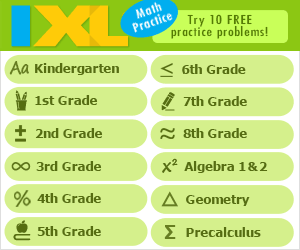6th Grade Math Standards - Mathematical Processes
Checks for Understanding (Formative/Summative Assessment)
0606.1.1 Calculator - Recognize different conventions used in calculator and computer spreadsheets (e.g., * for multiplication, ^ for exponent), but use mathematical notation in written work.
0606.1.2 Estimate - Recognize when an estimate is more appropriate than an exact answer in a variety of problem situations. 0606.1.3 Rounding - Recognize errors generated by rounding. 0606.1.4 Variables - Describe how changes in one quantity or variable result in changes in another. 0606.1.5 Equivalent - Illustrate properties of operations by showing that two expressions are equivalent in a given context (e.g., using an area model for distributive property, and grouping/set models for commutative and associative properties). 0606.1.6 Experiments - Model situations by devising and carrying out experiments and simulations. 0606.1.7 Real World - Formulate questions, design studies, and collect real world data. 0606.1.8 Hypothesis - Determine an appropriate sample to test an hypothesis. 0606.1.9 Books - Use age-appropriate books, stories, and videos to convey ideas of mathematics. 0606.1.10 Triangles - Use various methods (such as dynamic geometry software) to explore properties of triangles and quadrilaterals. 0606.1.11 Modeling - Model algebraic expressions with manipulatives, technology, and pencil and paper. State Performance Indicators
SPI 0606.1.1 Predictions - Make conjectures and predictions based on data. SPI 0606.1.2 Estimates - Judge the reasonableness of the results of rational number estimates and/or computations. SPI 0606.1.3 Integers - Use concrete, pictorial, and symbolic representation for integers. SPI 0606.1.4 Properties - Select the representation that models one of the arithmetic properties (commutative, associative, or distributive). SPI 0606.1.5 Tiles - Model algebraic expressions using algebra tiles.
Search Internet4Classrooms

Custom Search






